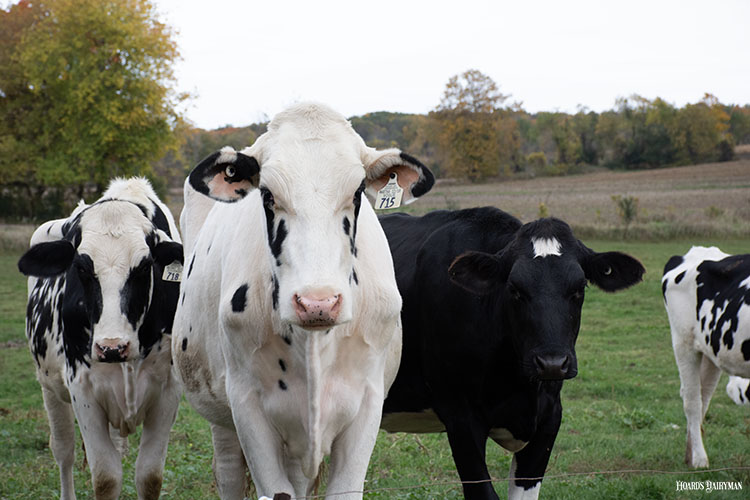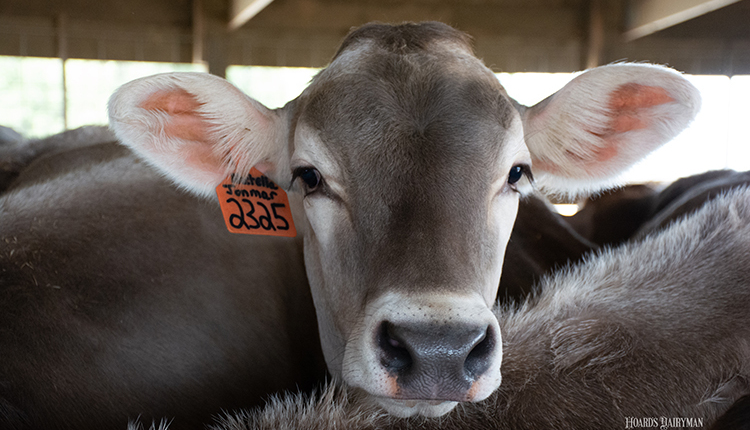
In 2013, people were celebrating the birth of Prince George and the appointment of Pope Francis, watching “Frozen,” and enjoying Taylor Swift in her “Red” era.
In the dairy industry in 2013, the legendary “Bing. Bang. Boom.” rang out in the World Dairy Expo showring as KHW Regiment Apple-Red-ET stood Reserve Grand Champion to her Grand Champion clone, Apple-3, in the International Red and White Show. The average genomic Net Merit (NM$) of marketed Holstein bulls was just shy of +100. The first genomic evaluation was introduced for Ayrshires. Ten years ago, there were fewer than one million genotypes in the national cooperator database. Today, there are just shy of eight million.
Recognizing the state of dairy a decade ago is significant when we consider the genetic progress and enhancements achieved since the Council on Dairy Cattle Breeding (CDCB) began providing genetic services fueled by precompetitive collaboration.
In 2013, CDCB assumed the responsibility of calculating U.S. genetic evaluations from USDA’s Animal Genomics and Improvement Laboratory (AGIL), making CDCB the steward of the national cooperator database. This transition from a government body to a third-party, non-profit organization was possible and successful through pre-competitive collaboration across the industry. There was trust between entities, built on decades of collaboration around the milk recording and genetic evaluation systems. They recognized the continued need for independent and trustworthy U.S. genetic evaluations.
Strong movement ahead
Fast forward to 2023. Our system that provides genetic and genomic evaluations remains pre-competitive among organizations that have producers top-of-mind. This collaboration includes dairy record providers, dairy record processing centers, members of the National Association of Animal Breeders, members of the Purebred Dairy Cattle Association, and genomic nominators.
Throughout the past decade, this collaboration has enabled CDCB and AGIL to develop and publish new traits like Feed Saved, Heifer Livability, and resistance to diseases. Breed Base Representation opened the door for crossbred evaluations, and the quality of genomic testing data was enhanced through CDCB certification requirements for genotyping labs and genomic nominators.
When the global dairy community meets in Madison, Wis., for World Dairy Expo this fall, CDCB will host its ninth annual industry meeting. The meeting will be Wednesday, October 4 from 7:30 to 11:30 a.m. in The Tanbark and is free for all to attend. CDCB requests attendees register for planning purposes.
Presenters will recap the genetic advancements of the past decade while sharing work-in-progress that impacts the next 10 years. The morning kicks off with a message from CDCB CEO Joäo Dürr titled, “Impact of the national cooperator database on dairy cattle genetic progress” and a 10th anniversary recognition.
Midway through, a panel takes the stage to better understand genetic mutations in cattle and genomics’ role in discovery. This conversation, moderated by Neal Smith of the American Jersey Cattle Association, will include panelists Paul VanRaden of AGIL, Spencer Hackett of Melarry Farms, Matthew McClure of ABS Global, and Rich (J.R.) Tait Jr. of Neogen.
The meeting will conclude with a look to the future through current research being conducted at AGIL, at CDCB, and funded by CDCB at institutions across the country. This research includes a focus on milking speed, mobility/lameness, feed efficiency, and methane emissions.
For more information about speakers, a complete schedule, and to register, click here. We look forward to seeing you at the 2023 CDCB industry meeting, “A Decade of CDCB: Genetic Advancement Through Pre-Competitive Collaboration” on Wednesday, October 4, in The Tanbark!








